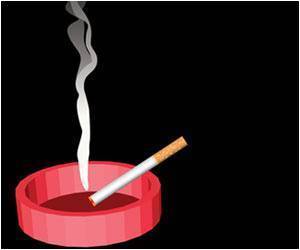Researchers have revealed that one compound from third-hand smoke, which forms when second-hand smoke reacts with indoor air, damages DNA and sticks to it in a way that could cause cancer.

"The best argument for instituting a ban on smoking indoors is actually third-hand smoke," Hang, a scientist at Lawrence Berkeley National Laboratory (LBNL) said.
Researchers have found that many of the more than 4,000 compounds in second-hand smoke, which wafts through the air as a cigarette is smoked, can linger indoors long after a cigarette is stubbed out.
Based on studies led by Hugo Destaillats, Ph.D., also at LBNL, these substances can go on to react with indoor pollutants such as ozone and nitrous acid, creating brand-new compounds, some of which may be carcinogenic.
Source-ANI















